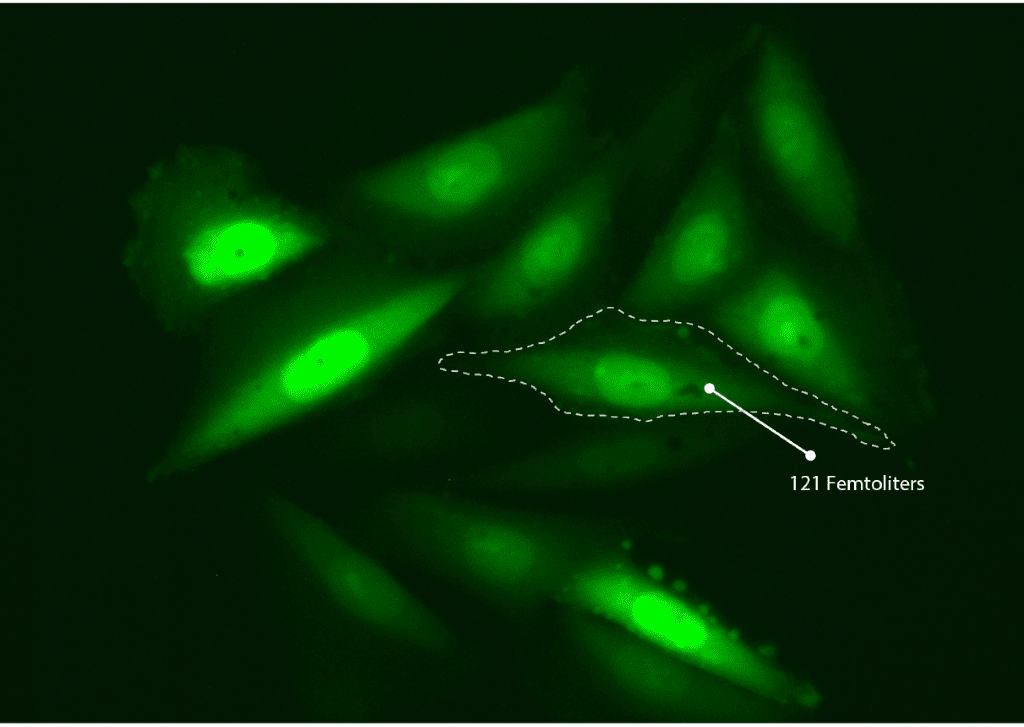Sponsored Content by Cytosurge AGApr 1 2020
In the early drug development process, the safety and potential applications of a drug are determined by understanding its interaction with the cell: how the drug behaves inside the cell, what concentration induces cytotoxicity or how fast the drug is cleared. However, in most of the in vitro drug assays, the amount of drug effectively taken up by the cell remains elusive, making it impossible to correlate the amount of drug present with the reaction of the cell. To overcome these hurdles, FluidFM technology gives scientists the opportunity to selectively inject the experimental drug directly into specific cells and monitor the reaction at the single-cell level.
The FluidFM BOT Bio Series is the only instrument capable of measuring drug dose-response curves at a single-cell level, without the interference of a specifically designed delivery method. Researchers can now decouple drug response from side-effects caused by the delivery method, simplifying and optimizing the drug development process.
FluidFM technology
FluidFM technology unites microfluidics and force microscopy by introducing microscopic channels into force-sensitive probes. This unique combination enables the handling of liquid volumes at the femtoliter scale, as well as force-controlled manipulations of microscopic objects. Altogether, this translates into an automatic, reliable and reproducible insertion of the FluidFM probe into any cell, that does not need human supervision.
FluidFM Nano-injection. Video Credit: Cytosurge
Thanks to the microfluidic channel inside the FluidFM nanosyringe, soluble molecules can be dispensed through a sub-micrometre aperture at the tip, keeping cell viability more than 95%. At the same time, the sensitive force feedback system makes it possible to reliably and directly inject the drug into single cells and even selectively choose whether the drug is delivered to the cytoplasm or the nucleus.
Direct delivery into the nucleus or the cytoplasm
The experimental drug can be directly delivered selectively into the nucleus or cytoplasm of hundreds of cells per hour. The targeted cells can be chosen by easily selecting cells with the mouse on the screen. Once the selection is made, the system will autonomously move to the right position and inject the drug into the correct part of the cells. There is no need for vectors or chemical modifications of the drug to pass through the cellular membrane.

Work with a wide range of adherent cell lines, inject a wide variety of drugs
The system has been already used with numerous cell lines. Among them are the most common cell lines (CHO and HeLa) but also more sensitive ones, like cardiomyocytes and neurons. With the FluidFM BOT BIO series, compounds with different densities and properties can be injected. Just 1 µL of drug solution is needed to inject an unlimited number of cells, reducing considerably the amount of reagent needed for cell-based assays.
Cell friendly
Cell viability of more than 95% is achieved, thanks to the miniaturized aperture of the FluidFM nanosyringe (600 nm) and its automatically controlled movement.
Observe and track the effects of drugs
After the injection, the observation conditions can be customized to the specific compounds, by choosing between the appropriate fluorescent filters. Moreover, the software records the coordinates of the injected cells, enabling long-term observation with the required settings. With this, the direct correlation of a drug dose-response can be achieved at a single-cell level.
Protein degradation time-lapse over 5 hours after FluidFM nano-injection. Video Credit: Cytosurge.
Know the precise amount of injected drug
With the built-in Volume Calculator tool, the amount of drug delivered into a specific cell can be quantified. If the experimental drug is co-injected with a fluorescent marker, the software can measure the amount, in femtoliter precision, of the drug administered into every cell. Therefore, a direct link between the concentration of a drug and the resulting effects can be established.
Left image: CHO cells injected with Lucifer Yellow. Volume Calculator tool of the FluidFM BOT BIO Series. Image Credit: Cytosurge. Right image: Volume measurement of Lucifer Yellow injected into hepatocytes with the FluidFM BOT BIO Series. Image Credit: Cytosurge.
With fluorescent compounds, the microfabricated FluidFM nanosyringe acts as a precise reference for measuring the injected volume. The manufacturing accuracy combined with the consistent dimensions of the FluidFM nanosyringe and its internal channel, serves as a reference fluorescence intensity per femtoliter. After the injection, the fluorescence intensity of every cell is compared to this reference fluorescence intensity, enabling users to accurately compute the injected volume for every injected cell.
Conclusion
FluidFM technology has been successfully used in a wide range of applications, including cell adhesion measurement, cell isolation, nano-injection into cells or cell extraction. For the future, we foresee a major impact of this technology, not only in the field of drug development, but also in gene editing and cell line development.
Cytosurge AGCytosurge AG
Our FluidFM solutions bring significant benefits to a wide range of applications in life sciences, biophysics and mechanobiology. Benefit from quantitative volume measurements of injected compounds during drug development, improved CRISPR gene editing by direct delivery into the nucleus, 2.5D nano-printing down to sub-micron levels or single cell adhesion and colloidal probe measurements.
Cytosurge AG develops, manufactures and distributes state-of-the-art nanotechnology solutions and systems based on its patented FluidFM® technology. At the heart of the technology are the patented hollow FluidFM probes which have apertures down to 300 nm enabling the handling of femtoliter volumes.
Sponsored Content Policy: News-Medical.net publishes articles and related content that may be derived from sources where we have existing commercial relationships, provided such content adds value to the core editorial ethos of News-Medical.Net which is to educate and inform site visitors interested in medical research, science, medical devices and treatments.
Last updated: Apr 1, 2020 at 9:18 AM

Leave a Reply